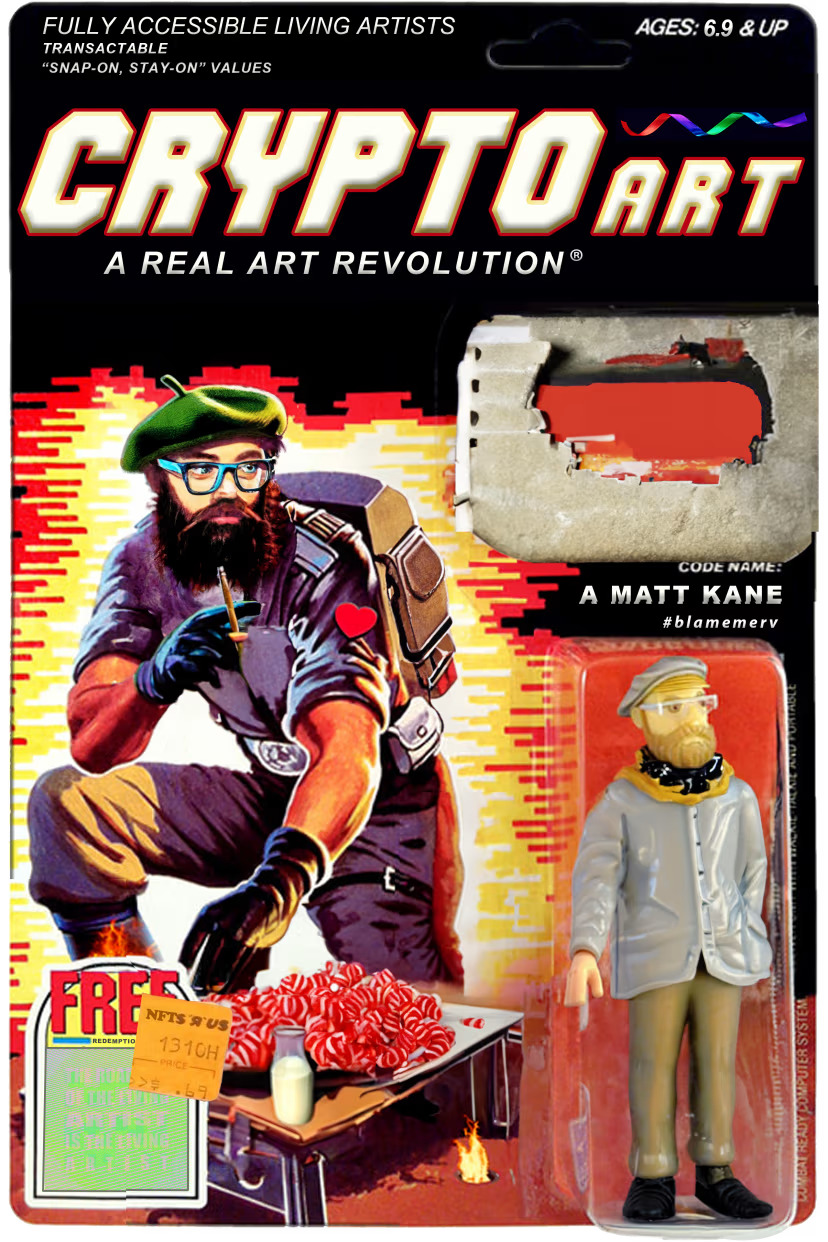Commentary
Tactical Homebrewing
by Angela WashkoThe movement to queer and decolonize fantasy roleplaying games has found inspiration in familiar methods of vernacular game design.

Often cited as the first true tabletop roleplaying game, Dungeons & Dragons was first released in 1974 after one thousand copies of the play manual were printed and assembled in co-author Gary Gygax’s basement. Adopted by people seen as nerds and outcasts, the game allowed players space to perform as empowered characters within liberating fantasy worlds. Yet many players and communities who felt excited by the possibilities offered by this immersive roleplaying form were repelled by the sexism, racism, homophobia, and transphobia deeply embedded in its lore, which was created mostly by white cisgender men. In recent years we’ve seen a movement to reclaim, expand, and transform D&D. While this movement may have started from critique, it has expanded into the development of new kinds of game design, game tools, and approaches to performative play.
The game’s failures around representation are well-documented. In a 1976 issue of The Dragon, a popular community magazine, Len Lakofka proposed seemingly arbitrary score penalties on female characters, limiting the types of roles that “women may enter.” Lee Hibbard’s 2019 essay “Redesigning the Tabletop” elaborates on the colonialist, othering logic at play in D&D’s assignment of inherently evil qualities to dark-skinned races, like orcs and drow. Gender transition was used as a punishment to embarrass players assumed to be straight men. Media scholar and game designer PS Berge details their experience navigating D&D’s trans-exclusionary lore from both a historical and personal lens in the 2023 article “The Table and the Tomb.” Alongside their detailed historical and contemporary media analysis, they share an uncomfortable moment they personally went through while playing the 2017 D&D module “Tomb of Annihilation,” when a fountain changed the gender identity of—and then killed—their beloved nonbinary character.
Adopted by people seen as nerds and outcasts, Dungeons & Dragons allowed players space to perform as empowered characters within liberating fantasy worlds.
In 2020, Wizards of the Coast, the publisher of D&D, publicly acknowledged the game’s shortcomings and the work they intend to do to address the ways in which descriptions of D&D fantasy races are “painfully reminiscent of how real-world ethnic groups have been and continue to be denigrated,”and their intent to introduce more diverse representation of gender and sexuality in the rulebooks and modules. Even so, many players and facilitators of the game still question the company’s approach and vision for change. As a result, they have taken matters into their own hands.
When dungeon masters create their own settings and game content for D&D, it is known as “homebrewing.” This has been common since the original 1974 release. Recently, a specific approach to homebrewing that queers and decolonizes the game has become a more visible subset of the practice. Hibbard, in the aforementioned essay, describes their personal approach to homebrewing as a process that “involves writing the queer narratives I never got to experience as a child, working to create a space where my players can have the happy lives they’ve always wanted” and facilitating stories and performances that focus on “triumph over oppression, where queer voices are heard instead of silenced.” In an effort to create a formalized system for antiracist homebrewing of D&D, Arcanist Press created “Ancestry & Culture: An Alternative to Race in 5e” to educate the TTRPG community to the social construction of race and the dangers of believing in faux-scientific justifications for “racial traits” in D&D.

In 2018, Brennan Lee Mulligan, a veteran improv performer and one of the best-known professional dungeon masters, created the streaming show “Dimension 20” in the “actual play” format—i.e., recorded and broadcast live performances of TTRPG sessions—that has become increasingly popular in podcasts and online video. What sets “Dimension 20” apart is Mulligan’s politically engaged storytelling with diverse groups of players at the table. In an interview with me, Mulligan acknowledged the importance of reinventing the fantasy canon and its many problematic tropes. But he also added a nuanced call for game masters to think carefully about which tropes are harmful and should be removed, and which ones marginalized players might want to explore and grapple with during gameplay. He put forward this question for other TTRPG facilitators: “What happens when a player says, Actually I would like to challenge that trope by participating in it or reclaiming this thing that people like me have been barred from?”
A recent season of “Dimension 20” starred popular contestants of “RuPaul’s Drag Race” as players at Mulligan’s table. It inspired a new generation of queer people to make D&D their own. “Camp is a huge hinge and shared piece of DNA culturally between drag performance and tabletop roleplaying,” Mulligan told me. The season, titled “Dungeons and Drag Queens,” highlighted the liberatory power of reclaiming fantasy tropes through homebrewing, and the possibility for players to create their own worlds and value systems. In the first episode, Bob the Drag Queen delightedly exclaims: “So once we say it, it becomes canon!” “I think people who aren’t having their stories told like they want them to be told are gravitating toward these games right now,” Mulligan said. “Even as we struggle for these games to be better and continue to move in a more welcoming and inclusive direction, there is still, when compared to traditional media, the invitation to tell a story exactly to your values.”

Beyond homebrewing the mainstream staples, there is a movement of artists, game developers, and entertainers rethinking what TTRPGs can be. Rules-light indie TTRPGs may emphasize cathartic performance, collective worldbuilding, map-making, journaling, identity transformation, political issues, and reflection over math-heavy, hack-and-slash games with massive rulebooks.
Rules-light indie TTRPGs may emphasize cathartic performance, collective worldbuilding, identity transformation, and reflection.
Everest Pipkin is a media artist and community organizer who started playing D&D and other TTRPGs in basements as a kid. While attending art school, they noticed overlaps between TTRPGs and the Fluxus movement, as well as contemporary computational art, namely the surprising affinities between their shared rule-based systems, chance operations, and improvisational performance. Pipkin described TTRPGS to me as “a rare type of conversational play, especially in an era when a lot of entertainment is delivered unidirectionally.” Their shift into TTRPG design is not a complete divergence from mainstream games—rather, they are effectively creating generative tools for homebrewing existing games. In The Ground Itself (2019), players collaborate to tell the history of a fictional world. Some groups play it as a game in itself, while others use it to create a setting for their D&D campaign. World Ending Game (2022) on the other hand, can be used to end a tabletop roleplaying game from any existing system, offering a toolkit to design satisfying, meaningful epilogues that range from apocalyptic disasters to gentle fadeouts. “Even if my games are relatively rules-light, even if they carry their politics inside of them,” Pipkin said, “they exist in conversation with mainstream tabletop games.”


David Blandy and Larry Achiampong collaborate on video and machinima works such as the “Finding Fanon” trilogy (2015–17), which interweaves the writings and plays of postcolonial philosopher Frantz Fanon with the artists’ personal efforts to understand the histories of oppression associated with their own family trees. Blandy is drawn to the shared performative imaginings that happen at a TTRPG table. “The space that’s created in between the players is intensely real,” he told me in our interview. “It’s like you have these four or five different imaginations, all imagining the same virtual objects.” He has developed Gathering Storm (2022–24), a game during which players collaboratively create a postcolonial science-fiction world and navigate histories that have been obscured alongside present-day injustices. He described wanting to put players into a position to “rethink the present through the future.” The type of performance that happens in these games, Blandy said, is “a way of inhabiting another person and another world and really understanding it from within rather than looking at it from a kind of anthropological point of view, which is often kind of the space that you end up in as an artist.” That position of the player gives him faith in the medium’s emancipatory, transformative potential.

As an artist, I have always sought meaningful spaces for performance outside of traditional galleries. Whether I’m creating feminist interventions in World of Warcraft or having networked conversations with notorious “pick-up artist” Roosh V to hold him accountable for his misogyny, throughout my career I’ve been committed to exploring ways to disrupt virtual environments and online public spaces to provoke conversations about the underlying politics embedded in their design as well as the communities they foster (and exclude). I’m currently deeply immersed in a D&D campaign with artists and arts administrators where I play a hulking hypersexual orc rogue named Goldi, a burlesque performer and sex worker assassin who seduces and murders rich, power-abusing men. Suffice to say, it is liberating. As a pansexual mother of a toddler, I have found myself grappling with my postpartum body and feeling relegated to “mom” status in a lot of spaces I enter now, and reclaiming my power and sexuality in this TTRPG as a nearly nine-foot-tall orc has been cathartic and meaningful in ways I never expected.
“Dimension 20” gave me a tabletop roleplaying blueprint for collectively exploring transgressive ideas with care in a space of generosity and encouragement. As a result, game-mastering and facilitating homebrewed independent and outsider/folk TTRPGs has become a major part of my performance practice, even if it is not public-facing. I’ve come to deeply appreciate community-made safety tools for determining which topics are off-limits at the game table, as well as what subversive or taboo subjects we hope to take on together, and the ways in which collaborative worldbuilding can establish shared agency and accountability for players. I use my media art background to bring lighting design, projection, generative images, and performance to the experiences.
Communally performing liberatory play is what makes this art form so incredible.
As I begin to work on my own new TTRPG, I am thinking about when to build on existing games and when to break from them entirely. I want to encourage players and facilitators to reinvent the systems we’ve inherited, to critically inhabit ways of being that we’ve been suppressed from. I want to counter anthropocentric logics, foster queer kinship, and imagine alternative futures. And I want to put karaoke and dance and play and joy at the center of it all. Because ultimately, communally enacting and performing liberatory play is what makes this art form so incredible.
The author would like to thank the members of her D&D group: Terry Boyd (DM), Devan Shimoyama, Tom Hughes, and Sadie Powers.
Angela Washko is an artist and associate professor of art at Carnegie Mellon University in Pittsburgh.




